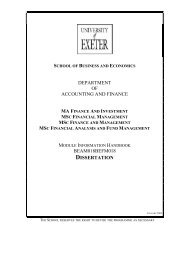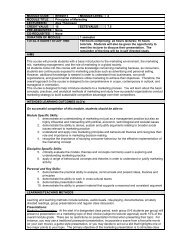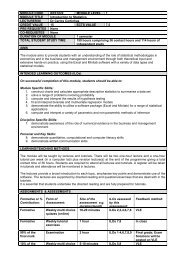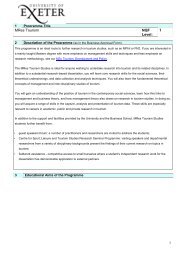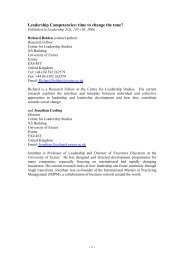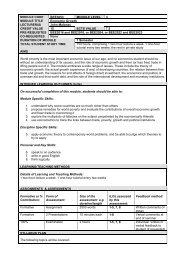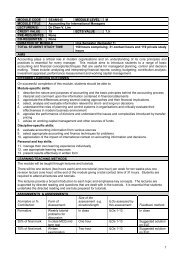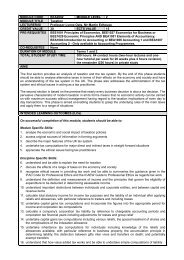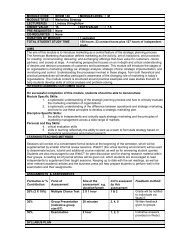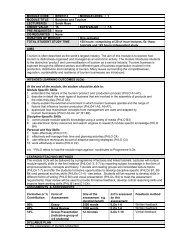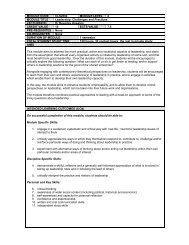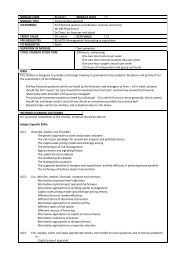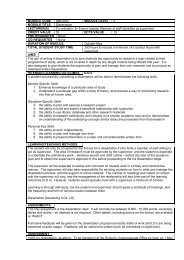Francesca Sanna-Randaccio paper - The Business School
Francesca Sanna-Randaccio paper - The Business School
Francesca Sanna-Randaccio paper - The Business School
Create successful ePaper yourself
Turn your PDF publications into a flip-book with our unique Google optimized e-Paper software.
Proposition I: With full symmetry a more stringent environmental tax imposed by country<br />
I ( t I t II ) will lead to some form of relocation (total or partial), except for extreme values of s .<br />
Proof: Setting A a c , we have that<br />
2<br />
( t t ) 2(<br />
A t ) s <br />
TR NR 4<br />
ˆ ˆ 1 1 I II<br />
I s<br />
9b<br />
With low transport costs Eq. (9) is always strictly positive since ( t ) s , and<br />
2(<br />
A t I ) s s<br />
ˆ 0<br />
NR<br />
TR<br />
is that<br />
ˆ1 1<br />
ˆ 1,<br />
II<br />
t I II<br />
because of 0 <br />
NR<br />
q . In the high transport costs case a sufficient condition for<br />
s 3( t I t II ) , that is if we exclude extreme values of s , since with<br />
s 3( t I t II ) the term in curly brackets in Eq. (9) is positive.<br />
With symmetry in market size and plant costs, there is only one centripetal force (captured<br />
by the term 2<br />
s ) discouraging firm 1 to choose TR, which may be labelled as the “lower<br />
competition” effect. By choosing TR firm 1 would in fact forego the benefits due to the cost<br />
asymmetry it enjoys vis-à-vis the foreign exporter when serving the home market via local<br />
production. 21 With low transport costs this centripetal force is always insufficient to compensate<br />
for the effect of the more stringent pollution tax which, by rising unit variable costs, stimulates the<br />
local firm to move production abroad. This is also generally the case with high transport costs. <strong>The</strong><br />
“lower competition” effect is obviously not present if we consider an international monopoly (see<br />
<strong>Sanna</strong>-<strong>Randaccio</strong> and Sestini 2010).<br />
can state:<br />
Furthermore, transport costs influence the characteristics of the process of relocation. We<br />
Proposition II : With full symmetry and low transport costs (i.e. s ( t I t II ) ) relocation<br />
is total, that is all production is moved abroad when country I enacts unilaterally a more stringent<br />
climate policy. Instead, with high transport costs ( s ( t I t II ) ) relocation may be total or<br />
partial.<br />
Proof:<br />
It is straightforward to show that<br />
(9)<br />
10



